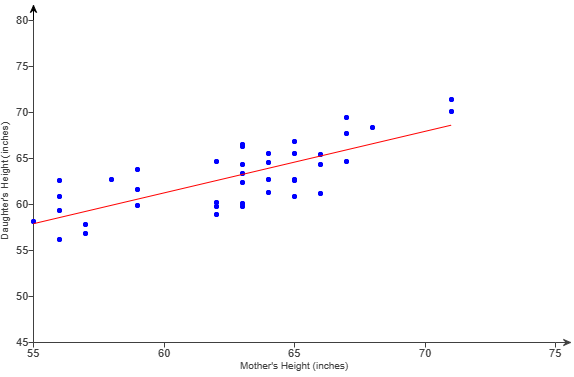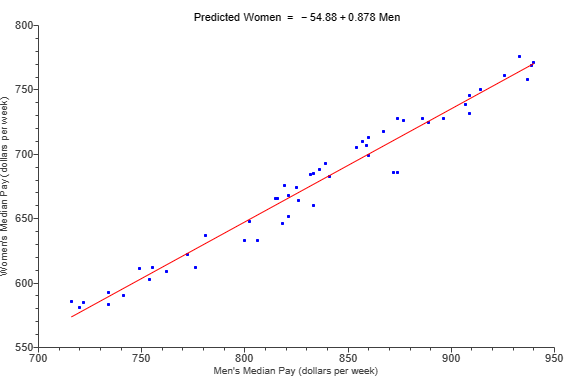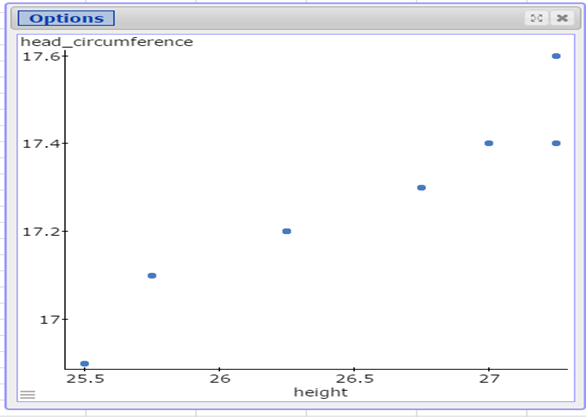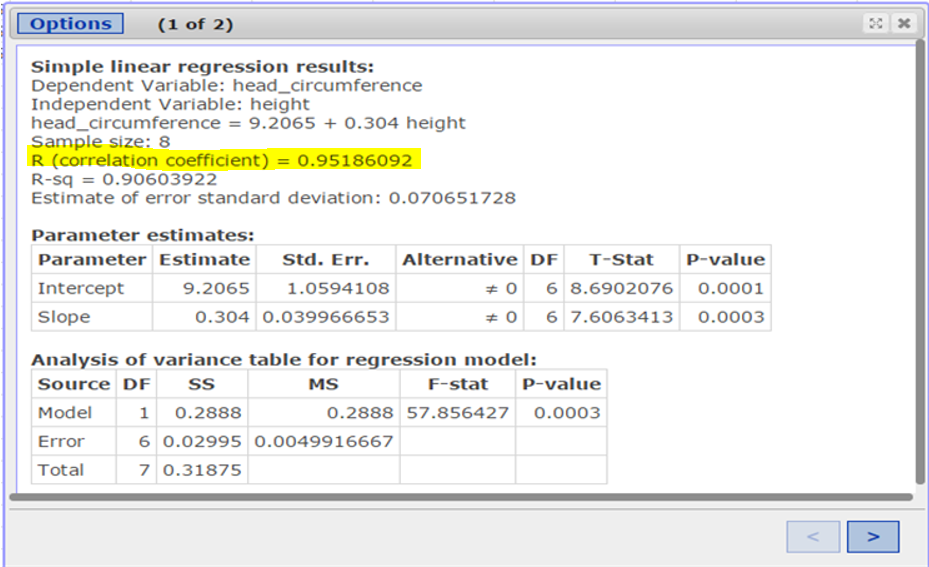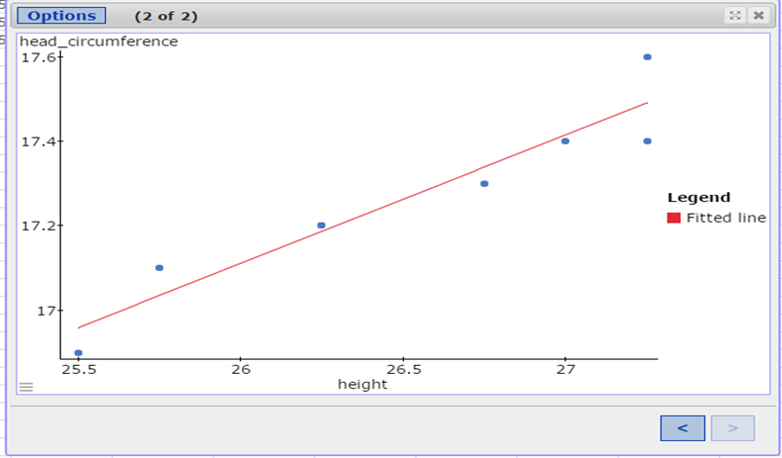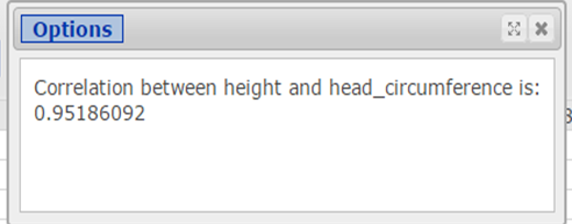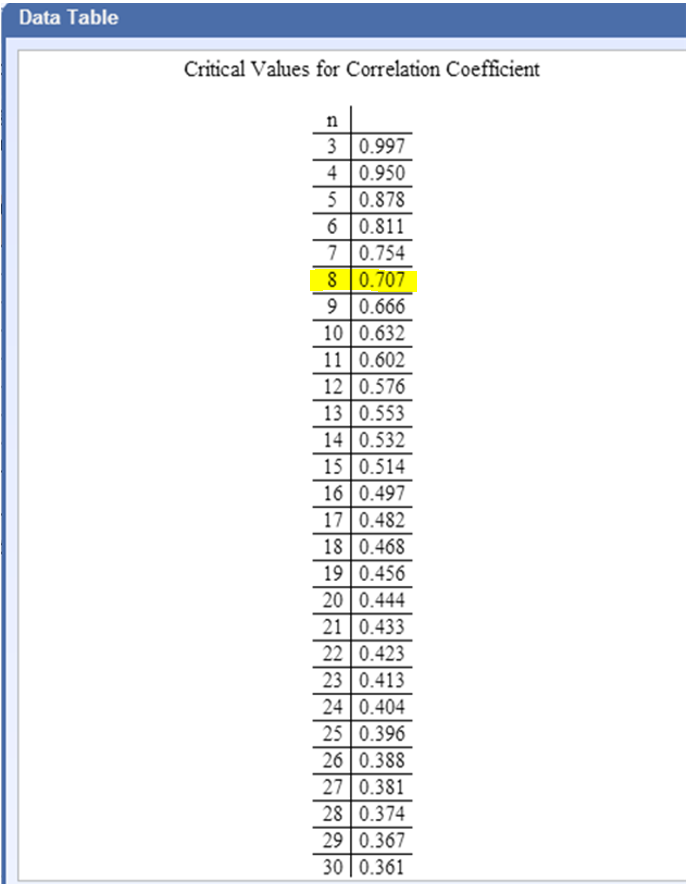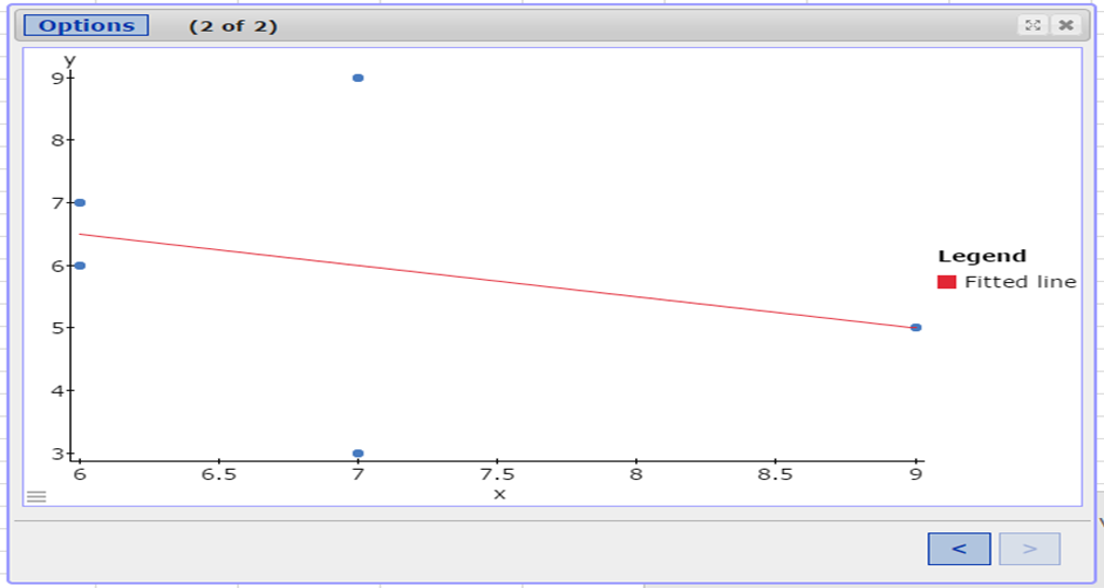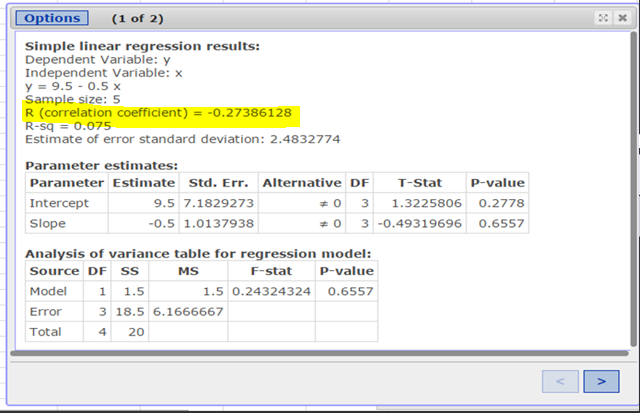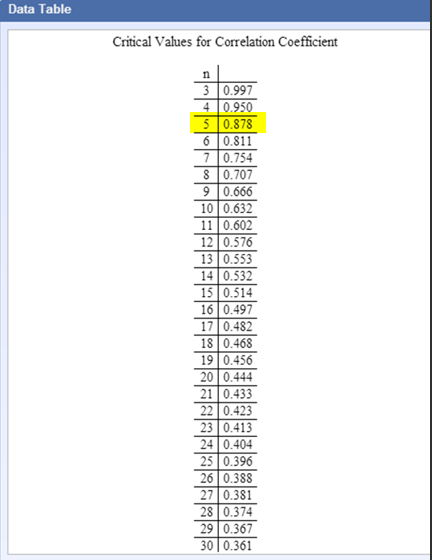(1.) The scatterplot shows the median starting salaries and the median
mid-career salaries for graduates at a selection of colleges.
$$
Mid-Career = -17,092 + 2.067\;Start\;Med
$$
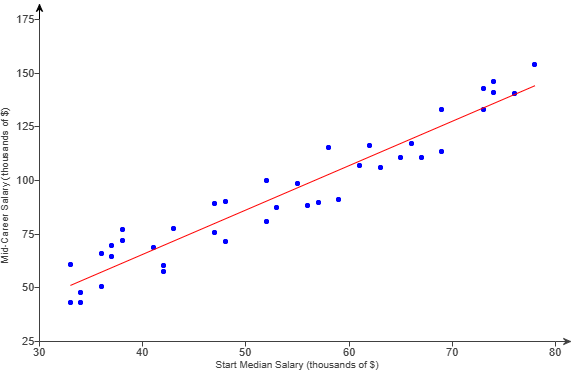
(a.) Identify the independent variable and the dependent variable.
(b.) Why is median salary used instead of the mean?
(c.) Using the graph, estimate the median mid-career salary for a median starting salary of $40000 (Round to the nearest dollar as needed)
(d.) Use the equation to predict the median mid-career salary for a median starting salary of $40000 (Round to the nearest dollar as needed)
(a.) The independent variable is the median starting salary.
The dependent variable is the median mid-career salary.
(b.) The median salary is used instead of the mean because the distribution of salaries is usually skewed. The median is a better measure of center for skewed distributions.
(c.) Using the graph, the median mid-career salary for a median starting salary of $40000 is about $\dfrac{50 + 75}{2} = \dfrac{125}{2}$ = $62.50 thousand ≈ $63000
$ (d.) \\[3ex] Mid-Career = -17,092 + 2.067\;Start\;Med \\[3ex] Mid-Career = -17092 + 2.067(40000) \\[3ex] Mid-Career = -17092 + 82680 \\[3ex] Mid-Career = 65588 \\[3ex] Mid-Career = \$65588 $

(a.) Identify the independent variable and the dependent variable.
(b.) Why is median salary used instead of the mean?
(c.) Using the graph, estimate the median mid-career salary for a median starting salary of $40000 (Round to the nearest dollar as needed)
(d.) Use the equation to predict the median mid-career salary for a median starting salary of $40000 (Round to the nearest dollar as needed)
(a.) The independent variable is the median starting salary.
The dependent variable is the median mid-career salary.
(b.) The median salary is used instead of the mean because the distribution of salaries is usually skewed. The median is a better measure of center for skewed distributions.
(c.) Using the graph, the median mid-career salary for a median starting salary of $40000 is about $\dfrac{50 + 75}{2} = \dfrac{125}{2}$ = $62.50 thousand ≈ $63000
$ (d.) \\[3ex] Mid-Career = -17,092 + 2.067\;Start\;Med \\[3ex] Mid-Career = -17092 + 2.067(40000) \\[3ex] Mid-Career = -17092 + 82680 \\[3ex] Mid-Career = 65588 \\[3ex] Mid-Career = \$65588 $
(2.) The distance (in kilometers) and price (in dollars) for one-way airline tickets from
San Francisco to several cities are shown in the table.
(a.) Determine the correlation coefficient for these data using a computer or statistical calculator.
Use distance as the x-variable and price as the y-variable.
(b.) Recalculate the correlation coefficient for these data using price as the x-variable and distance as the y-variable.
What effect does this have on the correlation coefficient?
(c.) Suppose a $55 security fee was added to the price of each ticket.
What effect would this have on the correlation coefficient?
(d.) Suppose the airline held an incredible sale, where travelers got a round-trip ticket for the price of a one-way ticket.
This means that the distances would be doubled while the ticket price remained the same.
What effect would this have on the correlation coefficient?
The solution to this question is: here (in the home page)
| Destination | Distance (km) | Price ($) |
|---|---|---|
|
Dallas Kansas City Baltimore New York City Seattle |
2353 2421 3945 4139 1094 |
172 198 265 308 141 |
(a.) Determine the correlation coefficient for these data using a computer or statistical calculator.
Use distance as the x-variable and price as the y-variable.
(b.) Recalculate the correlation coefficient for these data using price as the x-variable and distance as the y-variable.
What effect does this have on the correlation coefficient?
(c.) Suppose a $55 security fee was added to the price of each ticket.
What effect would this have on the correlation coefficient?
(d.) Suppose the airline held an incredible sale, where travelers got a round-trip ticket for the price of a one-way ticket.
This means that the distances would be doubled while the ticket price remained the same.
What effect would this have on the correlation coefficient?
The solution to this question is: here (in the home page)
